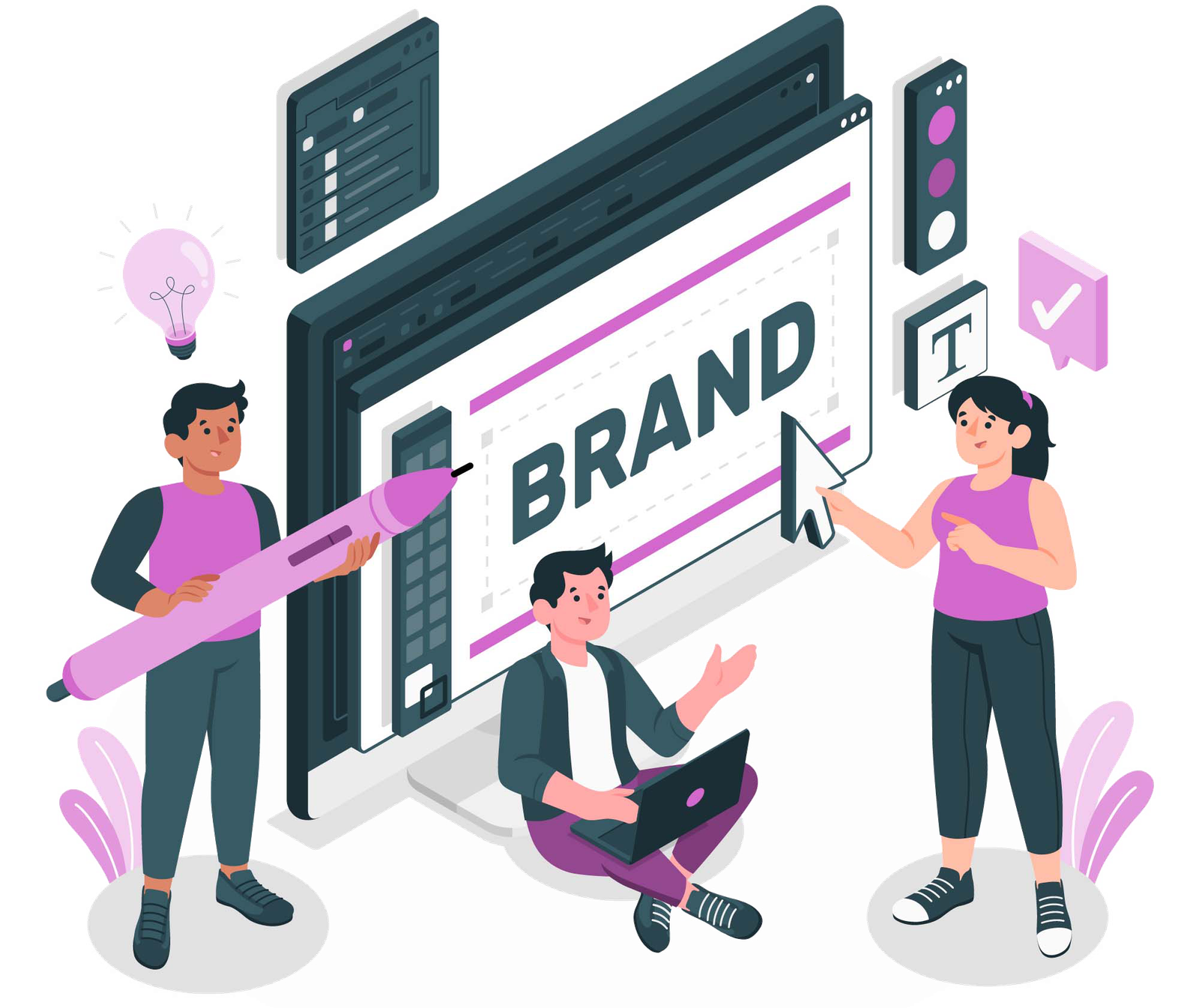Employer branding has become a more and more popular concept in today’s competitive marketplace. Creating, developing, and executing an employer branding strategy is a demanding and complex project.
But, do you know what exactly is employer branding and how it works?
In this article, you will get an insight behind the scenes of building a strong employer brand and gaining a company’s reputation.
Follow us on this fascinating journey as we explore the concepts of employer branding, revealing the strategies and insights required to succeed in the modern environment.
Understanding Employer Branding
Simply said, employer branding represents the reputation you gain as an employer among your staff and associates.
It presents your company’s reputation, core values, and culture, as well as employees’ experience. It also represents what it’s like to work in your company and what makes you different from your competitors.
If your company wants to attract top-tier talents, your HR managers have to understand how employer branding works and how to build it successfully.

Besides building a strong company reputation, employer branding can be great for cutting your hiring costs in half and minimizing turnover rates, saving you money.
Building a strong employer branding strategy goes beyond just reputation. Here are some compelling benefits:
Reduced Hiring Costs: Employer branding can significantly reduce the costs associated with attracting and hiring new talent. Studies show that strong employer brands attract more qualified candidates, minimizing the need for extensive advertising and agency fees.
Lower Turnover Rates: A positive employer brand fosters a sense of loyalty and engagement among employees, leading to lower turnover rates. Retaining experienced staff saves you money on recruitment and onboarding costs, and ensures institutional knowledge remains within the company.
Enhanced Public Image: A strong employer brand strengthens your overall public image. Potential investors and partners are more likely to view your company favorably, creating a positive feedback loop for your business.
According to a recent Glassdoor survey, 75% of job seekers are more likely to apply for a position at a company that actively manages its employer brand.
This statistic highlights the importance of crafting a compelling and authentic employer brand narrative.
How to Build a Strong Employer Brand?
If you want to create an outstanding, strong, and relevant employer brand, you have to be ready to roll up your sleeves and get to work. Here’s a breakdown of the key steps involved:
1. Storytelling: Craft Your Brand Narrative
Storytelling plays a central role in crafting a brand. Companies are using specific and tailored messages that will represent their brand voice in the best possible manner.
2. Assess Your Current Reputation
Understanding your current employer’s brand perception is crucial for crafting an effective strategy. Ask yourself one question. What is the current reputation of your company on the market? Start from this point.
Conduct internal surveys to gauge employee sentiment and gather feedback through exit interviews. An exit interview can give you great insight into what people think can be improved and what aspects you can expand.
Additionally, leverage external resources like Glassdoor to analyze online reviews and ratings from potential employees.

3. Define Your Ideal Candidate Profile
Who are you trying to attract? Clearly define your ideal candidate profile by considering the skills, experience, and cultural fit you seek in new hires. This will help you tailor your employer’s branding messages to resonate with the right talent pool.
4. Craft Your Employer Value Proposition (EVP)
Your company’s core values, mission, and vision are the foundation of your employer’s branding strategy. Use these elements to craft a compelling Employer Value Proposition (EVP). Your EVP should clearly communicate what makes your company a great place to work and the unique benefits you offer employees.
Here are some examples of companies with strong Employer Value Propositions (EVPs):
Google: Known for its innovative culture, employee perks, and commitment to professional development.
HubSpot: Emphasizes a remote-first work environment, a culture of transparency, and opportunities for career growth.
Zappos: Renowned for its focus on company culture, employee happiness, and exceptional customer service.
These are just a few examples and successful EVPs can be found across all industries, including startups such as:
Buffer: Buffer is renowned for its transparent culture and commitment to remote work. They offer flexible schedules, generous vacation policies, and a strong emphasis on work-life balance.
Basecamp: Basecamp is known for its emphasis on work-life balance and a culture that values employee well-being. They offer a four-day workweek during the summer months and prioritize remote work flexibility.
Slack: Slack prioritizes employee engagement and collaboration. They offer competitive salaries, comprehensive benefits, and opportunities for career growth. Slack also fosters a culture of diversity and inclusion, with initiatives aimed at promoting belonging and equality in the workplace.
5. Develop Your Employer Branding Strategy
Choose the right channels to promote your employer brand. This might include your career website, social media platforms, participation in industry events and career fairs, or even employer branding awards.
Leverage the power of social media to showcase your company culture and employee experiences. Encourage employee-generated content through initiatives like social media takeovers or employee testimonial videos.

Challenges and Considerations
While many employer branding methods are effective, it’s important to be aware of potential challenges and navigate them strategically:
Maintaining Consistency: Employer branding is an ongoing process. Ensure your messaging and company culture remain consistent across all platforms and touchpoints. A disconnect between your employer brand and employee experience can damage your reputation.
Addressing Negative Feedback: Inevitably, you might encounter negative reviews or feedback online. Respond promptly and professionally, addressing concerns and outlining steps to improve. Transparency and a commitment to progress are key in mitigating the impact of negative feedback.
Demonstrating Authenticity: Actions speak louder than words. Ensure your employer branding efforts are backed by genuine company practices and a positive work environment. A mismatch between your employer brand and employee reality can lead to a loss of trust and damage your reputation.
Further Strengthen Your Employer Brand
There are several additional methods for strengthening your employer’s brand, let’s check some of them here:
Employee Recognition Programs: Publicly acknowledge and reward employee achievements. This fosters a sense of appreciation and motivates employees, further strengthening your employer brand.
Corporate Social Responsibility (CSR): Highlight your company’s commitment to social good and environmental responsibility. Socially conscious job seekers are increasingly drawn to companies with strong CSR values.
Focus on Employee Wellbeing: Prioritize employee wellbeing by offering competitive benefit packages, flexible work arrangements, and opportunities for work-life balance. A focus on employee well-being signals that your company values its people and creates a more attractive work environment.
Summary
Building a strong employer brand is an investment in your company’s future.
By following these steps, leveraging effective methods, and addressing potential challenges, you can create a compelling employer brand narrative that attracts top talent, fosters employee loyalty, and positions your company for long-term success.
Remember: Employer branding is a journey, not a destination.
Continuously evaluate your strategies, adapt to evolving trends, and strive to create a truly exceptional work environment. By doing so, you’ll attract and retain the best people, fueling your company’s growth and prosperity.

Irina Mihajlovic
Meet Irina Mihajlovic: a seasoned content writer with over 4 years of experience. Armed with expertise in SEO and a knack for crafting engaging narratives, Irina specializes in niches such as crypto, marketing, and HR. Her passion for excellence shines through in every project she undertakes.


